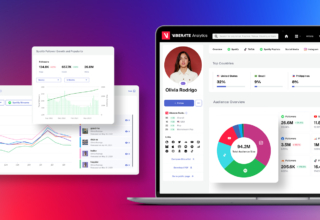
As consumer demand changes, so do their expectations of the service type they require from their energy providers. They now expect more regarding safety, sustainability, reliability, convenience, personalization, and control in addition to a safer and cheaper energy source.
According to McKinsey, the increasing demand for energy and changing consumer expectations have made the energy sector more complex. The energy sector is complex, competitive, and unpredictable, but digital transformation in energy sector can help companies overcome these challenges while improving sustainability.
Driven by technologies like AI and machine learning, digital transformation in energy industry is improving efficiency and safety while facilitating the increased use of renewable energy. These technologies have the potential to redefine the energy industry by driving cost efficiency, providing new revenue opportunities, and changing business models.
This article will explore five technologies enabling the energy industry’s digital transformation –
Table of Contents
1. Internet of things (IoT)
IoT-enabled devices can help to improve the safety and efficiency of offshore oil and gas (O&G) production. By providing real-time data on drilling progress, weather conditions, and equipment performance, these devices can help managers make informed decisions that can improve the safety of workers and efficiency.
IoT-enabled energy storage and analytics tools can help reduce the imbalance in renewable energy supply and demand by analyzing market data. Geothermal energy can be remotely produced and managed through an integrated network enabled by IoT. This is especially beneficial for geothermal power plants in earthquake-prone areas, as remote management can ensure employee safety.
IoT-based smart meters can significantly increase energy distribution efficiency by providing real-time consumption data for monitoring energy use, voltage fluctuation, tampering, and power outages. Advanced Metering Infrastructure (AMI) systems enabled by these smart meters can operate remotely, making them even more beneficial for managing energy resources.
2. Artificial Intelligence and Advanced Analytics
An AI (Artificial intelligence) smart grid manages the flow of data and energy between the energy provider and consumer. This network collects, stores, and analyzes huge data sets used for fault identification and energy demand forecasting through advanced analytics and machine learning. As a result, AI-managed smart grids can help increase efficiency across the energy value chain.
More accurate forecasting and prediction from AI programs can help optimize fossil fuels and renewable energy use. This could lead to increased efficiency and lower costs for energy provision. Additionally, integrating advanced data analytics with energy sector strategic planning software can further optimize resource allocation and allow for higher levels of efficiency.
3. Robotic Process Automation
RPA can automate repetitive, error-prone tasks in energy trading, such as meter reading validation, billing, payment reversals, and complaint management. This can help reduce costs and improve efficiency.
Robotics has various implications not only for renewable energy but also for other industries as well. For example, bots can survey and maintain equipment at large solar farms to help reduce the risks of failures and accidents. In this way, robotics can help us to create a more sustainable future.
4. Cloud Computing
The cloud has the potential to revolutionize the way we manage energy production, distribution, and provision. Cloud-based applications can improve collaboration and provide better financial and operational data visibility. This can lead to more informed decision-making on spending, productivity, and cycle time.
Cloud-based technology can improve customer experience by giving real-time insights to customers into their current and future energy consumption. It can also predict when maintenance will be needed for expensive equipment and manage backups automatically to avoid downtime and expected outages.
5. Blockchain
The implications of blockchain technology on energy trading are vast and far-reaching, but most importantly, it has the potential to create a more secure and trust-based system for all parties involved. By keeping track of the source of renewable energy and recording the carbon footprint of different participants in the network, blockchain can help create a more sustainable future for everyone.
Another implication of blockchain technology is its potential use in energy grids. By storing excess energy in blockchain via smart meters, algorithms can match buyers and sellers using smart contracts. Successful small-scale blockchain technology pilots have been used worldwide for transparent and efficient energy trading.
Conclusion
The energy sector is undergoing a major transformation. As the world grows and changes, the energy sector must keep pace with those changes and help people meet their energy needs.
With the rise of digital technologies, energy companies can now engage with customers and employees in new and compelling ways. This leads to a digital transformation in the energy sector that paves the way for new opportunities for companies and customers.














